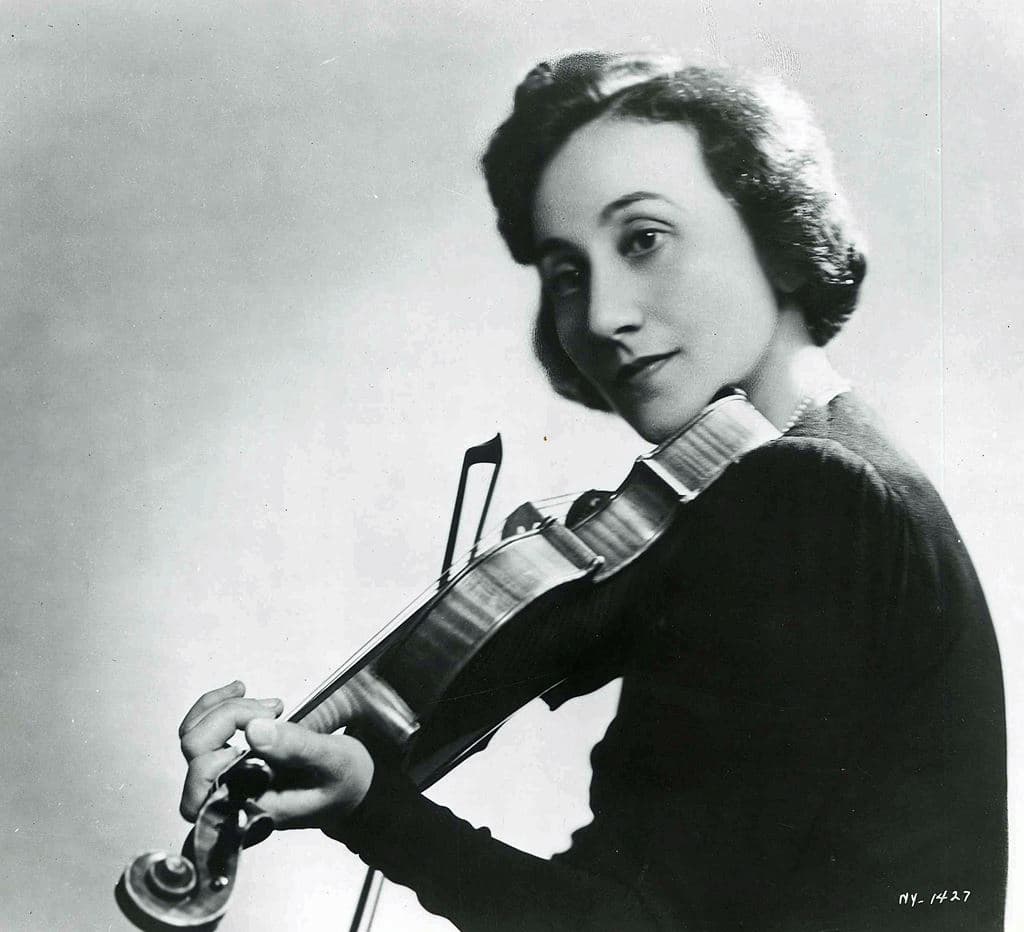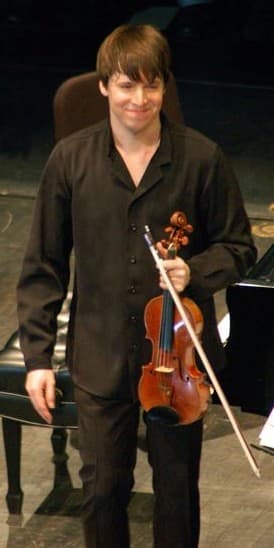Everyone knows that the most famous violins in the world were built by Antonio Stradivari. He was a violin maker from Cremona, Italy, who lived from 1644 to 1737.
However, you may not know that although Stradivari’s workshop produced over a thousand violins, violas, cellos, guitars, and harps, the Smithsonian estimates that only 650 instruments survive today.
A handful have gone missing over the years. We look at some of the mysterious, tragic, or just plain bizarre stories behind three lost Stradivarius.
Ex-Davidov-Morini, stolen in 1995 and never recovered

Erica Morini
In 1924, Oscar Morini bought his daughter a Stradivari violin. It was made in 1727 and named the ex-Davidov, after a former owner.
Oscar Morini’s daughter was no ordinary violinist. Erica Morini was a child prodigy born in 1904. By 1916 she was making her debuts with the Leipzig Gewandhaus and the Berlin Philharmonic to rave reviews. So when her father paid $10,000 for the ex-Davidov, he was making an investment in one of the world’s great up-and-coming concert artists.
Erica Morini Plays Bruch’s Violin Concerto
Erica Morini traveled the world for decades with that violin, which eventually became known as the ex-Davidov-Morini. She retired in 1976 and was a diva till the end, famous for her irritability and paranoia. Even though she was no longer playing professionally, and eventually not playing at all, she chose to keep the instrument nearby, locked in her china closet.
Almost twenty years after her retirement, in October 1995, Morini was hospitalized. At some point during her absence, someone – probably someone with a set of keys, because there was no sign of a forced entry – reached in between pieces of china and switched out an empty case for the one with the Strad. In her final delirium, she often asked about the violin, but nobody told her it had gone missing. She died on 1 November 1995, at the age of 91.
However, the mystery of where the violin went – and who stole it – lives on.
Duke of Alcantara, lost in 1967

Duke of Alcantara
The Duke of Alcantara Stradivari was made in 1732, and apparently named after a seventeenth-century Spanish nobleman. It was sold multiple times over the centuries until 1961 when it was donated to the University of California, Los Angeles.
In 1967 graduate student David Margetts was using the instrument, and keeping it in a double case with another instrument. After a rehearsal in Hollywood, he stopped for groceries. When he got back to his car, he noticed that the large case was gone. He didn’t know if it had been taken from the vehicle or if he’d left it on the top of the car before driving away.
Meanwhile, music store owner Nadia Tupica spotted an abandoned infant on the side of the highway. She pulled over and was astonished to see that it wasn’t a baby; it was a double violin case! She kept the instruments until her death in 1978.
After that, the violin – its monetary value unrecognized or ignored – changed hands a variety of times. Her nephew inherited it, but then he got divorced. His ex-wife Teresa Salvato was an amateur violinist and won custody of the instrument in their divorce.
In January 1994, Teresa Salvato lent the violin to her teacher, who in turn brought it to a luthier to be worked on. Of course, it was immediately identified as the missing Stradivari and flagged as stolen property. Lawyers became involved, all trying to answer the question, who really owned this violin? By May 1994, the authorities were threatening to arrest Salvato, so she went into hiding, trying to dodge them. But eventually, the instrument was surrendered. The settlement ended with the missing instruments being returned to UCLA and Salvato getting a check for $11,500.
Nowadays, the instrument spends most of its time locked in a vault. It is, however, played occasionally by young competition winners. Hopefully, they know the instrument’s history and are extra careful when driving with it!
Ex-Gibson ex-Huberman. Stolen in 1936.

Joshua Bell with Ex-Gibson Stradivarius
Bronislaw Huberman was one of those rare violinists who had not just an instrument by Antonio Stradivari, but a second one by an equally renowned maker known as Guarneri del Gesù. In 1936, while playing Carnegie Hall, he brought his del Gesù onstage. When he returned to his dressing room after the performance, his Strad was missing. Remarkably, it wasn’t even the first time this had happened: the violin had been stolen from him in 1919 in Vienna. Then, it only took a few days before it was recovered. This time, it would take decades.
Violinist Robert Altman was a familiar fixture at Carnegie Hall since he played in youth orchestras. He got guards out of the way by offering them cigars to smoke, and when no one was watching, he took his chance, hid the Strad under his coat, and vanished.
He kept the instrument for decades. He’d never be able to sell it, because every dealer in the world would recognize it. But he enjoyed playing on one of the greatest instruments ever made. He even kept newspaper clippings about the heist in the instrument’s case.
Altman was a cad and a criminal, and toward the end of his life, he was imprisoned for molesting a minor. According to his widow, before he died, he made a dramatic confession about his role in the theft. Experts were contacted to examine the instrument, and it turns out the violin in question was indeed the missing one.
Ultimately the instrument was returned to the stage. Nowadays, violinist Joshua Bell travels the world with it.
For more of the best in classical music, sign up for our E-Newsletter




My Grandfather bequeathed me his 1709 Stradiverious Violin. Is it worth a look?
Please keep in mind that many violin makers faked Strad labels. This said you need to find a violin maker or dealer who has a reputation for knowledge and honesty and have the instrument examined. Stradivarius did not just make his violins randomly, their were distinct patterns and measurements he used and the scroll of the instrument can also give a lot of information. And definitely get at least 2 opinions.
SINCE I KNOW NOTHING ABOUT VIOLINS (RETITRED ENGINEEER) THERE SEEMS TO BE TWO GREATS: STRADIVARIUS AND JOSEPH GARNEIUA DEL GERSU. PLEASE HELP CLEAR UP THE CONFSUSION, THANKS
I really do believe that I’ve stumbled across one that is of the first 3, it has no numbers inside the body or the neck. And the case. It is got some damage on it. But it should have.
I came across a violin that was in poor condition as the wood was dry and cracked and no varnish or nourishment of any kind existed on the violin, it was in a glass case. It was located in the north east of England, UK. It was rumoured to be a lost stradivarius violin but i only saw it once. I must have been a teenager at the time, i’m in my fifties now! Never thought anything about it at the time!
My Strad has Moniuszko engraved on the back…
Is this a real strad?